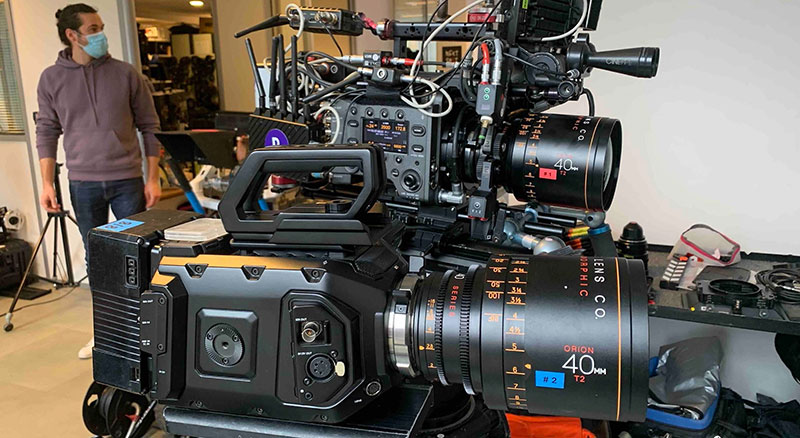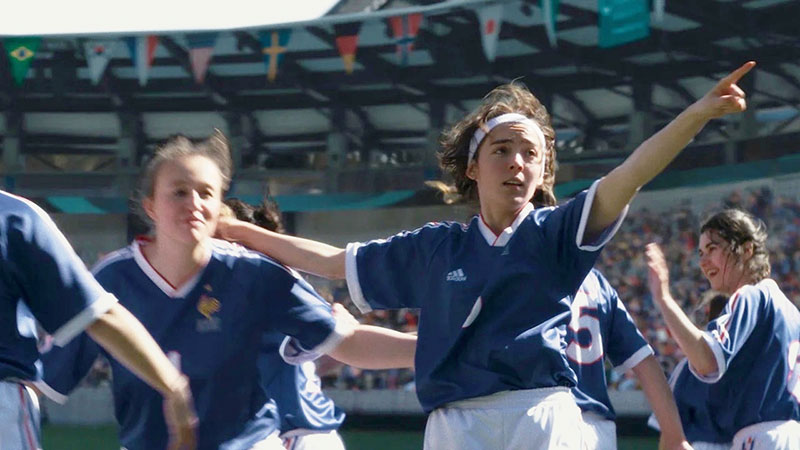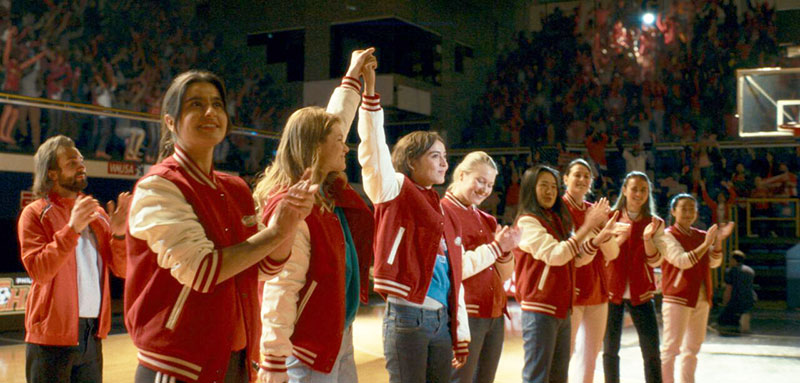MPC VFX supervisor Laurent Larapidie captured crowd replication shots with the URSA 12K camera to fill the stadiums that are a major feature in French soccer player Marinette’s story.

Director Virginie Verrier's feature film Marinette follows the life of Marinette Pichon, a proponent of professional French women's soccer and one of the sport's star players.
Shooting in early 2022 over seven weeks, Director of Photography Xavier Dolléans, AFC undertook a lengthy pre production stage of five months to prepare for the project and pre-production. "Very quickly, many questions arose,” he said. “How should we film the matches and reproduce American stadiums while shooting in France? What cameras will we use?
“Those questions led us to the VFX team at MPC, who have considerable experience in the crowd duplication techniques we would need to pack the stadiums that were going to form such a big part of the story."
Crowds … and More Crowds

However, Xavier realized that duplicating crowds would be a very time consuming task, involving cast of extras and specialised processes. After discussions with Laurent Larapidie, VFX Supervisor at MPC, it was decided that Laurent, working with a camera assistant, would establish a splinter team working independently of the main unit to manage the extras and to set up the required photography for the scenes.
"I had entire stadiums to fill, but only 70 extras to work with in-camera," Laurent said. "We'd shoot those extras from different angles, frequently changing their props, clothing and positions. It was a time consuming exercise, but the ability to work autonomously on this part of the shoot saved the production considerable time.
“We used CG crowd simulations in post production for the very wide angles, but being able to use live action crowd elements gave us the opportunity to achieve much more convincing effects for closer shots than depending on CG assets.

"I was immediately interested when I heard the crew had the Blackmagic Design URSA Mini Pro 12K on set. As a VFX supervisor, I always prefer using equipment that will give us the highest quality material to work with in post, in other words, maximum resolution, less distortion, a straightforward colour workflow and ease of management.”
Capturing the Plates
"The URSA is a camera that's easy to set up, simple to operate and well designed for the operator. After a quick run-through with the technical team to get up to scratch on how it works, I was ready to go. Fortunately it is also relatively light, so that we could mount it on a slider to keep us mobile. That made handling it on the turf and changing angles easier.”
The URSA Mini Pro 12K was equipped with Orion anamorphic lenses from Atlas Lens Co. Most of the VFX shots were captured in 8K at 48fps, and shot to accommodate a 2:39 aspect ratio to match the main unit cameras.

MPC’s VFX Supervisor Niranjan Siva confirmed that working with high resolution files in post production has important advantages. "We worked on 4K EXR files that were down-sampled from 8K by the lab, followed by an ACES colour managed workflow. The added value lies in the ability to crop or zoom in on the visuals without sacrificing quality,” he said.
Xavier agrees with these comments. "It is not uncommon in the film industry that VFX teams are called on to perform miracles using media that lacks detail and resolution,” he said. “With the URSA’s 12K sensor, that problem doesn't exist." www.blackmagicdesign.com




